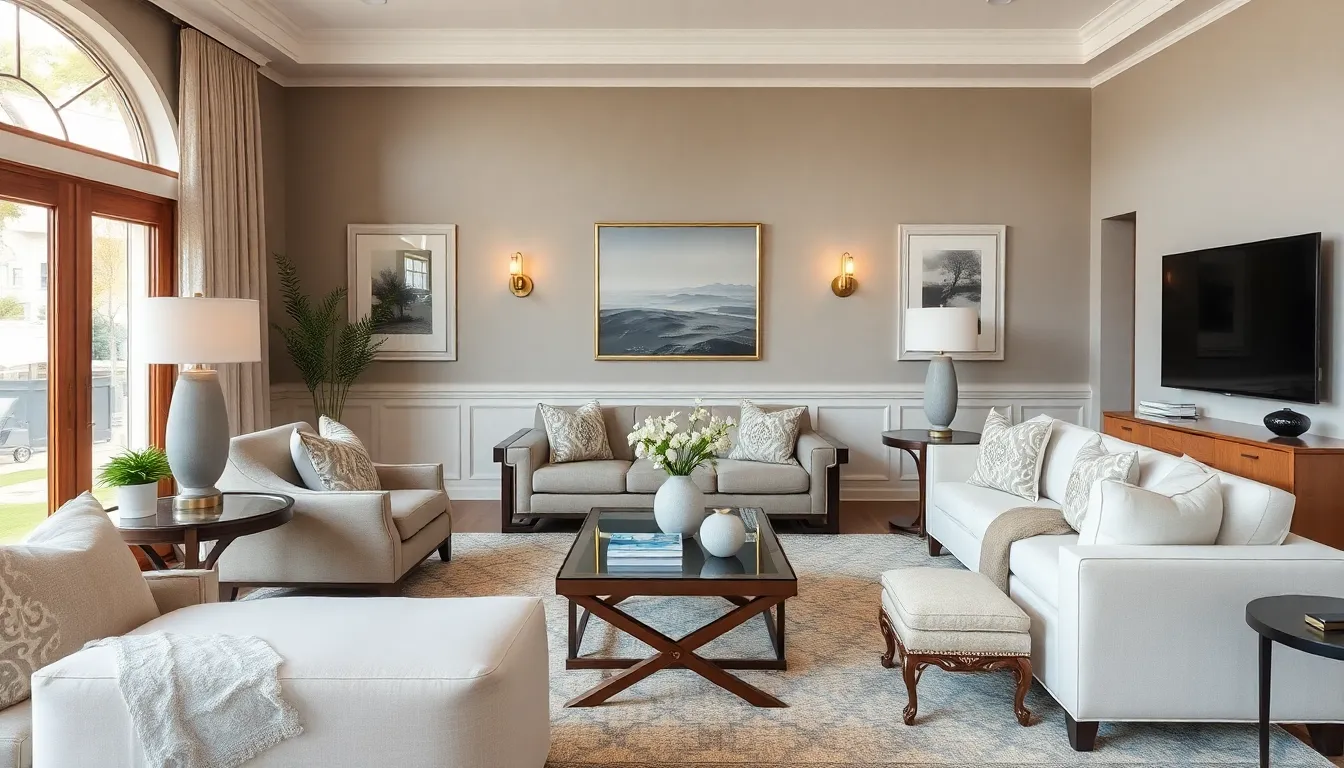Transitional Interior Design: Blend Classic and Contemporary with Decoratly 🏠✨
Discover the timeless elegance of transitional interior design. Learn about key elements, color palettes, and how to achieve a perfect balance between traditional and modern styles in your home with Decoratly.
What is Transitional Interior Design? The Perfect Blend of Old and New 🤔
Transitional interior design is a harmonious blend of traditional and contemporary styles, creating a timeless and sophisticated look. This design approach combines the comfort and warmth of traditional design with the clean lines and neutral color palette of contemporary style. The result is a balanced, elegant space that feels both classic and current.

Key Elements of Transitional Interior Design 🗝️
- Neutral color palette with subtle patterns and textures 🎨
- Mix of curved and straight lines in furniture and decor 🛋️
- Combination of traditional and contemporary materials 🪵
- Emphasis on comfort and functionality 🛌
- Curated accessories that blend old and new styles 🏺
🏛️ What is Transitional Interior Design? The Perfect Blend of Old and New
Transitional interior design is a harmonious blend of traditional and contemporary styles, creating a timeless and sophisticated look. This design approach combines the comfort and warmth of traditional design with the clean lines and neutral color palette of contemporary style. The result is a balanced, elegant space that feels both classic and current.
- Combines traditional and contemporary elements
- Features a neutral color palette with subtle patterns
- Emphasizes comfort and functionality
- Incorporates a mix of curved and straight lines
- Balances textures and materials for visual interest
Transitional design offers the best of both worlds, appealing to those who appreciate classic elegance but desire a more updated and relaxed feel in their homes.
🕰️ Is Transitional Style Outdated? The Timeless Appeal of Transitional Design
Far from being outdated, transitional style remains one of the most popular and enduring interior design trends. Its timeless appeal lies in its ability to adapt and evolve while maintaining a classic foundation. Here's why transitional style continues to be relevant:
- Flexibility: Easily incorporates new trends without a complete overhaul
- Broad appeal: Attracts both traditional and modern design enthusiasts
- Longevity: Creates spaces that don't quickly become dated
- Versatility: Suits various architectural styles and home types
- Balance: Offers a perfect middle ground between ornate and minimalist
Transitional style's enduring popularity is a testament to its ability to create spaces that feel both current and timeless, making it a smart choice for homeowners looking for long-lasting design solutions.
🔄 Transitional vs. Contemporary: Understanding the Distinction
While transitional and contemporary styles share some similarities, they have distinct characteristics that set them apart. Let's break down the key differences:
| Aspect | Transitional Style | Contemporary Style |
|---|---|---|
| Design Influence | Blend of traditional and modern | Current trends and minimalism |
| Color Palette | Neutral with subtle patterns | Bold colors and high contrast |
| Furniture | Mix of curved and straight lines | Sleek, minimalist designs |
| Textures | Varied, with emphasis on comfort | Smooth, sleek surfaces |
| Accessories | Curated mix of old and new | Minimal, often abstract or sculptural |
While contemporary design focuses on the "here and now," transitional design creates a timeless look by blending classic elements with modern sensibilities.
🎨 Materials in Transitional Interior Design: Creating Texture and Depth
Transitional interior design utilizes a diverse range of materials to create a rich, layered look that balances comfort with sophistication. Here are some key materials used in transitional spaces:
- Wood: Both dark and light finishes, often with simple grain patterns
- Fabric: Textured materials like linen, wool, and velvet for upholstery
- Glass: Used in lighting fixtures, tables, and decorative accents
- Metal: Brushed nickel, chrome, or bronze for hardware and accents
- Stone: Marble, granite, or limestone for countertops and fireplaces
- Leather: For upholstery, adding a touch of luxury and warmth
- Rattan or wicker: Introducing natural textures in furniture or accessories
The key to using materials in transitional design is to create a balanced mix of textures and finishes that add visual interest without overwhelming the space. This thoughtful combination of materials contributes to the comfortable yet refined atmosphere characteristic of transitional interiors.
💡 Lighting in Transitional Design: Illuminating the Perfect Balance
Lighting plays a crucial role in transitional interior design, helping to set the mood and highlight key design elements. Here's how to approach lighting in a transitional space:
- Mix traditional and modern fixtures for a balanced look
- Use a combination of ambient, task, and accent lighting
- Incorporate statement chandeliers as focal points
- Choose fixtures with clean lines and simple shapes
- Opt for warm, soft lighting to create a cozy atmosphere
- Use dimmers to adjust lighting levels for different moods
The right lighting choices can enhance the transitional style's blend of classic and contemporary elements, creating a warm and inviting atmosphere that's both functional and aesthetically pleasing.
Create Your Dream Transitional Space with Decoratly! 🏠✨
Ready to embrace the timeless elegance of transitional interior design? Sign up for Decoratly today and start transforming your living space into a sophisticated haven that blends the best of classic and contemporary styles! Our platform offers a curated selection of transitional furniture, decor, and accessories, making it easy to achieve the perfect balance of comfort and style. Plus, our expert designers are here to provide guidance and inspiration every step of the way.
